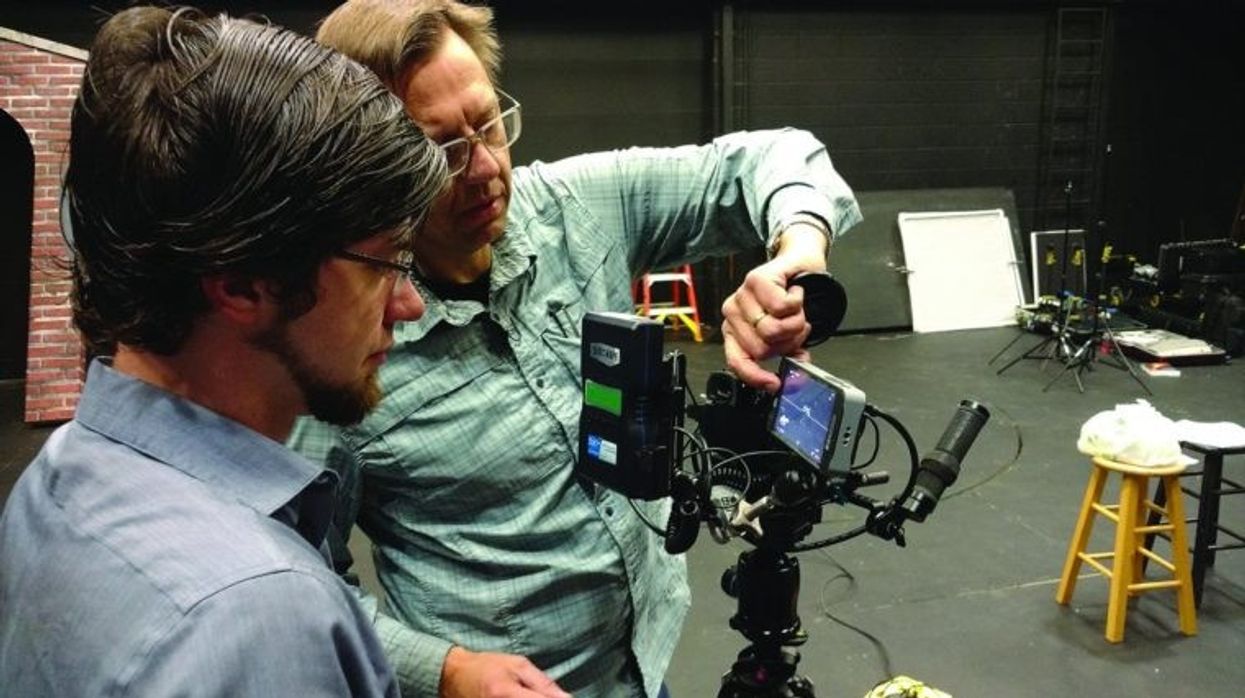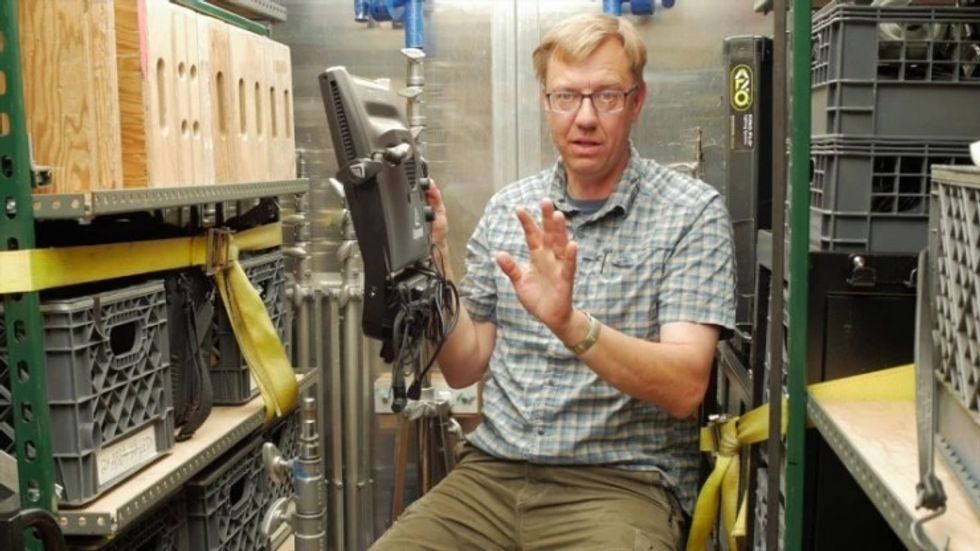You Need to Know This Gaffer's Tip on Lighting Faces in Spaces
Here are a few tips and tricks for gaffers working under tight time constraints.

Shooting some simple interviews and B-rolls for a corporate video sounds easy enough. Well, maybe not when the space you’re working in is Google’s beautiful, but massive new campus. While a cinematographer's job is to find the light needed to make a space work, a gaffer is there to help the DP's and director's vision come to life.
While being a gaffer might not be the most exciting position on a film crew, they are crucial to making the production work. Gaffers, rf the chief lighting technician, is the head electrician. They are the ones who come up with a plan to light every scene and know every detail about the produciton to help achieve a consistent look and feel that the DP and director want. Without our graffers, we wouldn't be able to get our lighting up quickly or safely enough to get the camera rolling.
If you are looking to become a gaffer, then I recommend reading this article we wrote about what a gaffer is and how to become one. For those of you who are gaffers or want to expand your knowledge on lighting for film and TV, keep reading because we have a few tips and tricks for shooting a B-roll as a gaffer.

Shooting B-Roll as a Gaffer
In this Meet The Gaffer video, Gaffer Luke Seerveld walks us through a four-day job that he was on, in which he was lighting interviews and B-roll with the designers and builders of Google’s large corporate spaces.
The Bay View and Charleston East campuses are the first time that Google has led the concept and construction of its own spaces. Naturally, and as you can imagine, the results are pretty stunning on both a technical and aesthetic scale.
However, large beautiful spaces o their own challenges when lighting people in them. Especially when you’re also contending with a lot of glass, construction, and time constraints. In the video, Seerveld takes us through each of his lighting setups in great detail to show how he got the job done.
The Lights in Seerveld's Package
You can check out Seerveld’s video for an in-depth look at which lights were used in each setup, but here’s a quick rundown of some of the most used lights in his package:
- Nanlux Evoke 1200
- Nanlux Dyno 1200C
- Aputure Light Storm 1200d
- Aputure Light Storm 600d
- Aputure Light Storm LS C300d II
- K 5600 Joker² 800W Jo-Leko
- Godox AD600Pro
Besides the specifics of which lights were used, the biggest takeaway from this video is that Seerveld and his team didn’t shoot a lot of fat. Almost everything that was shot made it into the finished piece. Having that quality B-roll with their subjects was gold in the edit because too often there’s not enough of it.
Seerveld used both a Light Storm 1200D from Apurture and a 1200 Evoke from Nanlux. This allowed him to either use them together or leapfrog setups so that he could keep moving and the team could get as many shots as possible. Keep in mind that, not only were they under a time constraint, but they were moving around a few different large buildings.
All in all, it’s not like Seerveld was pushing any creative boundaries in terms of lighting here. That’s generally what you want out of a corporate video like this. However, Seerveld did do his best to embrace what was already going on in these designed spaces, adding or subtracting a little here and there as needed to help celebrate these environments with the designers who brought them to life.
Sometimes, the best lighting choice is that which you don’t even notice is there at all.
Source: Meet the Gaffer











